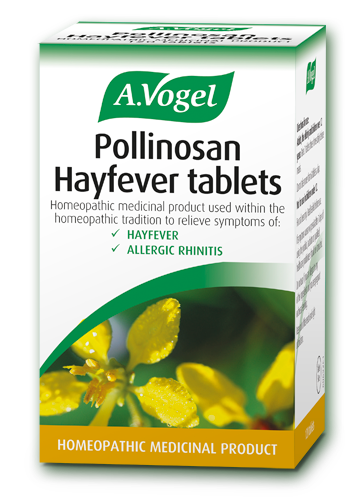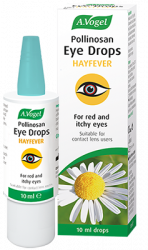Can I get hayfever symptoms in the winter?
For many people, the snuffling and sneezing they experience during summer as a result of hayfever don’t seem to cease as winter creeps in. So what’s going on here? Can you really get hayfever in the winter?
My honest answer is that it’s very unlikely, since plants generally do not pollinate during the winter, so there should be little to no pollen in the air.
However, people who suffer from hayfever are generally predisposed to developing other allergies as well as conditions like asthma or eczema. So what you may really be experiencing is a problem called allergic rhinitis; an allergic reaction which triggers an inflammation of the mucous membranes in the respiratory tract. Hayfever is just one type of allergic rhinitis!
So what else could be triggering your allergic rhinitis in the winter?
Mould
As winter approaches, mould can often appear in our homes, whether in the bathroom, lurking in cupboards or creeping into the corners of our rooms. Since you tend to spend more time indoors in the winter, even a little mould can cause an unpleasant allergic reaction in some.
The solution: Make sure to clean mould off surfaces and walls as soon as you see it using a specialised mould treatment. To prevent mould from appearing or returning, try to keep your home warm and dry by using heating regularly and drying clothes outdoors or in a well-ventilated room. Open windows regularly to let fresh air in and damp air out. I’d also recommend investing in some dehumidifiers to collect excess moisture from the air.
Dust mites
These little bugs can live in surfaces like sofas or carpets, and are one of the most common causes of allergic rhinitis. Again, since you’re spending more time indoors in the winter, this can become a bigger problem. In addition, dust can build up in radiators over the summer, so as soon as you turn them on in the winter, this collection of dust and dust mites can be blown into the air.
The solution: Hoover and dust regularly to keep dust and dust mites at bay. Wash your bedding regularly too, as this is a common place for dust mites to linger. If your problem is really bad, consider switching your fabric sofa for a leather or faux leather one, and switch your carpets for hardwood flooring. Dust mites find it much harder to live on hard surfaces!
Pet dander

Another common allergen are pets, an unwelcome realisation for many. Once again, spending more time indoors can exacerbate these symptoms. What many people don’t realise is that it’s not usually pet hair that’s the problem – it’s actually tiny flakes of skin called ‘dander’.
The solution: If you’re experiencing allergies to a friend or family member’s pet, ask them to keep their pet in a separate room while you’re there. If the pet is yours, this can be a trickier problem to solve. Try to keep at least some areas of your home pet free, such as your bedroom. As with dust mites, try to remove soft furnishings like sofas, carpets and curtains so dander won’t get trapped there. Hoover often and bathe your pet regularly – but make sure to use a non-drying shampoo so you don’t dry out your pet’s skin and cause even more dander.
Chemical irritants
Another common trigger that is often overlooked are chemical irritants. Now as I’ve noted these are ‘irritants’, so they may be causing an allergic reaction, or they may simply be irritating your respiratory tract, causing symptoms that resemble an allergic reaction.
Products like surface cleaners, furniture polish, toilet cleaner, air freshener and even laundry detergent are often packed full of harmful chemicals. In fact, according to Asthma UK, professional cleaners and those who use lots of cleaning products as part of their job (such as janitors or nurses) and more at risk of developing asthma. Scary stuff!
The solution: Switch to natural products where you can. Our sister company, Jan de Vries, stocks a fantastic range of eco-friendly cleaning products such as Ecover, so these are definitely worth looking into. You can also swap out many of your cleaning products for natural alternatives like vinegar, lemon juice or baking powder. Try swapping candles and chemical air fresheners for soya candles or essential oil diffusers.

What else can you do about allergic rhinitis during winter?
Even once you’ve taken steps to reduce allergens in your home, there is still plenty you can do to reduce your hayfever/allergic rhinitis symptoms.
Diet. Focus on a diet that’s high in natural anti-inflammatory foods and low in inflammatory foods. This means reducing dairy, alcohol, refined sugar and red meat, whilst eating more fresh fruit and veg, oily fish, and spices like ginger and turmeric.
Stress. Stress increases inflammation and can worsen allergies, so definitely try to reduce stress. This might involve adjusting your work/life balance, or just taking half an hour a day to relax.
 Herbal remedies. The good news is that our Pollinosan is indicated both for hayfever and allergic rhinitis, so it’s a great choice during the winter to help ease your allergic symptoms. It’s non drowsy and isn’t associated with the unpleasant side-effects of many anti-histamines and steroids. You can also ease your runny nose with our Luffa Nasal Spray, and soothe itchy eyes with our natural eye drops.
Herbal remedies. The good news is that our Pollinosan is indicated both for hayfever and allergic rhinitis, so it’s a great choice during the winter to help ease your allergic symptoms. It’s non drowsy and isn’t associated with the unpleasant side-effects of many anti-histamines and steroids. You can also ease your runny nose with our Luffa Nasal Spray, and soothe itchy eyes with our natural eye drops.
Nettle. Nettle has a cleansing effect on the body and is often used in histamine reactions such as prickly heat or hayfever. You could try a nettle tea in the morning and evening, or try our own fresh nettle tincture.




 Looking for relief of red and itchy eyes due to hayfever?
Looking for relief of red and itchy eyes due to hayfever?

